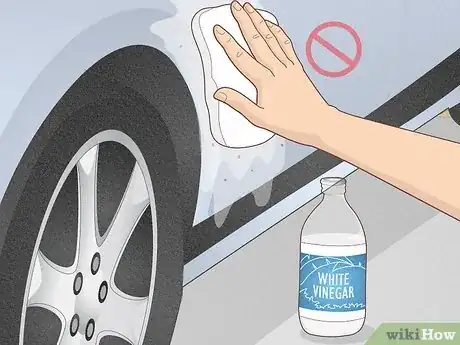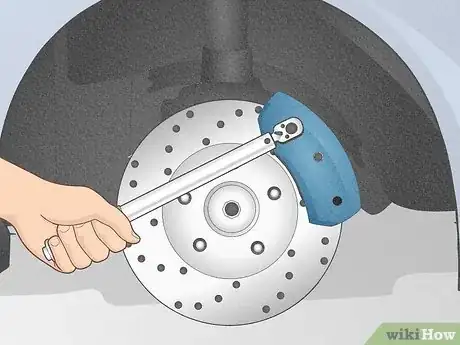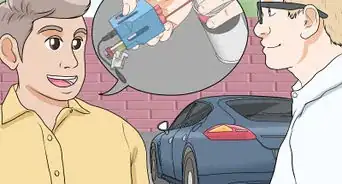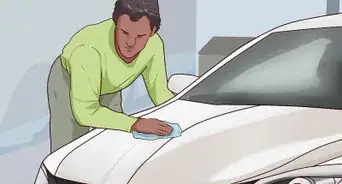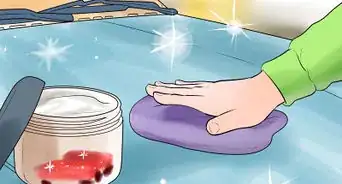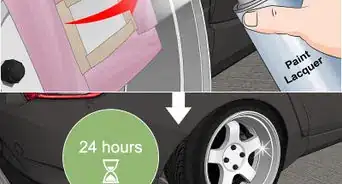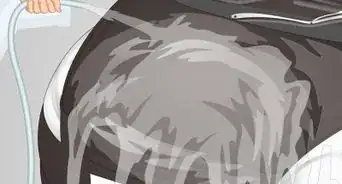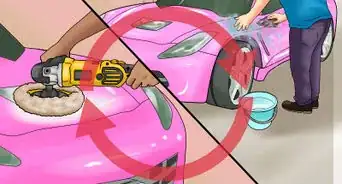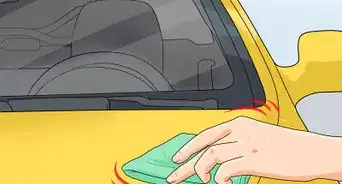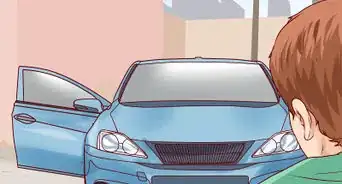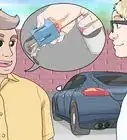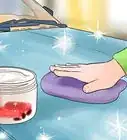This article was co-authored by wikiHow staff writer, Hunter Rising. Hunter Rising is a wikiHow Staff Writer based in Los Angeles. He has more than three years of experience writing for and working with wikiHow. Hunter holds a BFA in Entertainment Design from the University of Wisconsin - Stout and a Minor in English Writing.
There are 9 references cited in this article, which can be found at the bottom of the page.
This article has been viewed 2,686 times.
Learn more...
If you noticed specks of metallic dust stuck in your car’s paint, you’re probably dealing with some unsightly brake dust. A little bit of your brake pad grinds away every time you press your brakes, leaving behind brake dust that can scratch and damage the paint. Luckily, you can get rid of brake dust at home without any pricey visits to a detailer. Keep reading for everything you need to know about removing brake dust from paint and stopping buildup from forming.
Things You Should Know
- Wash and rinse your vehicle to clean off any fresh brake dust that’s still loose on the surface.
- Detail your vehicle with a clay bar to lift brake dust off of the surface without leaving any scratches on your vehicle’s paint.
- Spray an acid-free iron remover on your vehicle. Rinse the remover off after 2–3 minutes to dissolve the brake dust.
Steps
Removing Brake Dust from Paint
-
1Wash your vehicle to remove light brake dust on the paint’s surface. Fresh brake dust hasn’t dug into the paint yet, so a simple wash will do the trick. Fill one bucket with clean water and another with water mixed with car soap. Dip a sponge or scrub mitt into the soapy bucket and wash your vehicle, working from top to bottom to get rid of the brake dust. Spray your vehicle with a hose to rinse it off when you’re finished.[1]
- Brake dust normally builds up around the wheel wells, along the bottom of the body, and at the rear of your vehicle. It may look like black dust or orange flecks of rust.
- Brake dust caught in your sponge could dig into your clear coat or paint, so always rinse the sponge off any time you run it over your vehicle.
- Stick with soft cleaning sponges or towels that don’t have any abrasives that could scratch your paint.
-
2Run a clay bar over your vehicle to pick up stuck-on brake dust. A clay bar is a soft, malleable detailing putty that pulls debris and brake dust out from your paint. After you wash your vehicle, spray a clay bar lubricant on the surface and gently use the clay car by rubbing it back and forth over the surface. The brake dust will get caught in the clay bar so it doesn’t scratch or stick to your paint.[2]
- Alternatively, you can use a clay sponge. Still apply lubricant to the paint surface before using the sponge.
Advertisement -
3Apply an iron removal spray to loosen stubborn brake dust. Iron removal spray has chemicals that break down the metallic residue in the brake dust. When your vehicle is dry, spritz the iron removal spray onto the paint to completely coat the brake dust. Let the remover sit for 2–3 minutes before rinsing it off with clean water.[3]
- Some iron removal sprays are meant for removing brake dust from wheels. You can use them on car paint as long as they’re labeled “acid-free” or “neutral pH.” This spray also works to remove brake dust from painted wheels.
- Some iron removal sprays change colors when they come into contact with brake dust so you can easily see where there’s buildup.
- Follow the instructions on the specific iron removal spray you purchase since they may vary slightly between brands.
How do you reduce brake dust buildup?
-
1Install or replace brake dust shields around your brake pads. Brake dust shields are metal discs that fit behind your brakes so dust doesn’t spread as easily. Take the tire off your vehicle. Then, remove the caliper and uninstall the rotor. Unscrew the bolts holding the old dust shield and fit the new dust shield in place. Just tighten the bolts and put your brakes and tire back on your vehicle.[6]
- Most newer vehicles already have brake dust shields, but older or custom vehicles may not have them installed.
-
2Apply a ceramic coating on your vehicle. Fully wash and detail the exterior of your vehicle so you have a clean starting surface. Apply the ceramic coating by applying it to a chamois cloth and rubbing it in a thin, even layer across your vehicle’s paint. Work the ceramic coating in with back and forth movements across a 2 ft × 2 ft (61 cm × 61 cm) section. After about 20–30 seconds, buff the excess ceramic coating with a clean towel.[7]
- Clear coat creates a protective layer over your paint that makes brake dust slip off the surface instead of sticking.
-
3Switch to non-metallic ceramic brake pads. While metallic brake pads are high-performance, they create a lot more brake dust. Ceramic brake pads produce less dust, so you won’t notice as much buildup on your wheels or car paint. Change the brake pads by removing the tire and caliper from your wheel, prying the old pads out with a screwdriver, and loading the new ceramic pads into it.[8]
- Only use brake pads that are recommended by the manufacturer of your vehicle. Some modern vehicles will only work with specific replacement parts that they’ve developed.
Warnings
- Avoid using acidic or abrasive cleaners on your vehicle’s paint since it could leave marks or damage on the surface.[9]⧼thumbs_response⧽
References
- ↑ https://www.cleanipedia.com/ph/out-of-home/car-washing-tips-how-to-clean-your-car.html
- ↑ https://youtu.be/NkiFFHsCUJA?t=97
- ↑ https://youtu.be/W_cyHz3XssU?t=295
- ↑ https://vehiclefreak.com/will-vinegar-damage-car-paint/
- ↑ https://youtu.be/ejduv-cWisc?t=101
- ↑ https://youtu.be/m2-rpooyOzY?t=33
- ↑ https://youtu.be/byKcYsEyWGk?t=538
- ↑ https://youtu.be/gbE5acVbn4o?t=451
- ↑ https://youtu.be/voV6NTm0KNg?t=110



